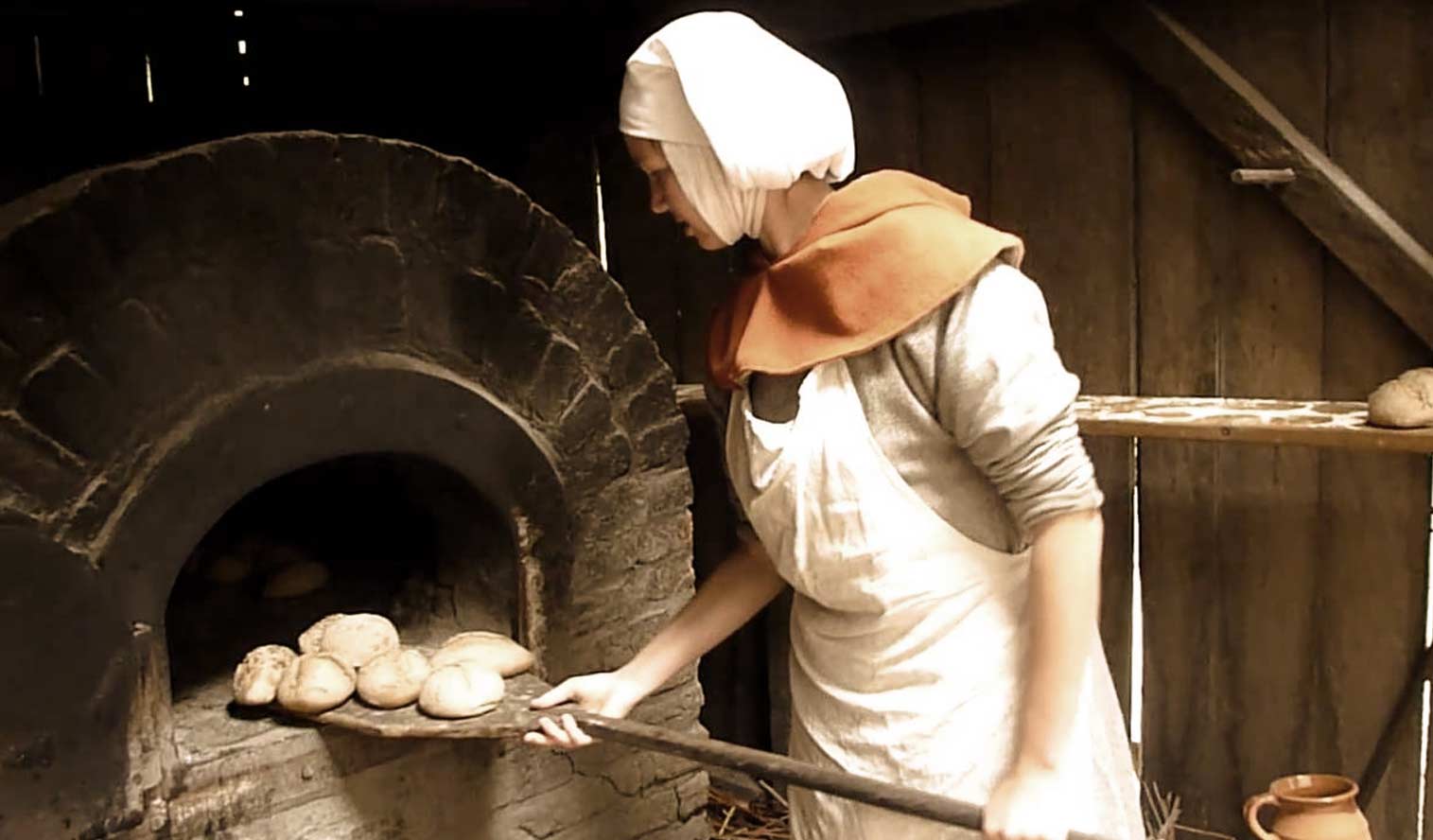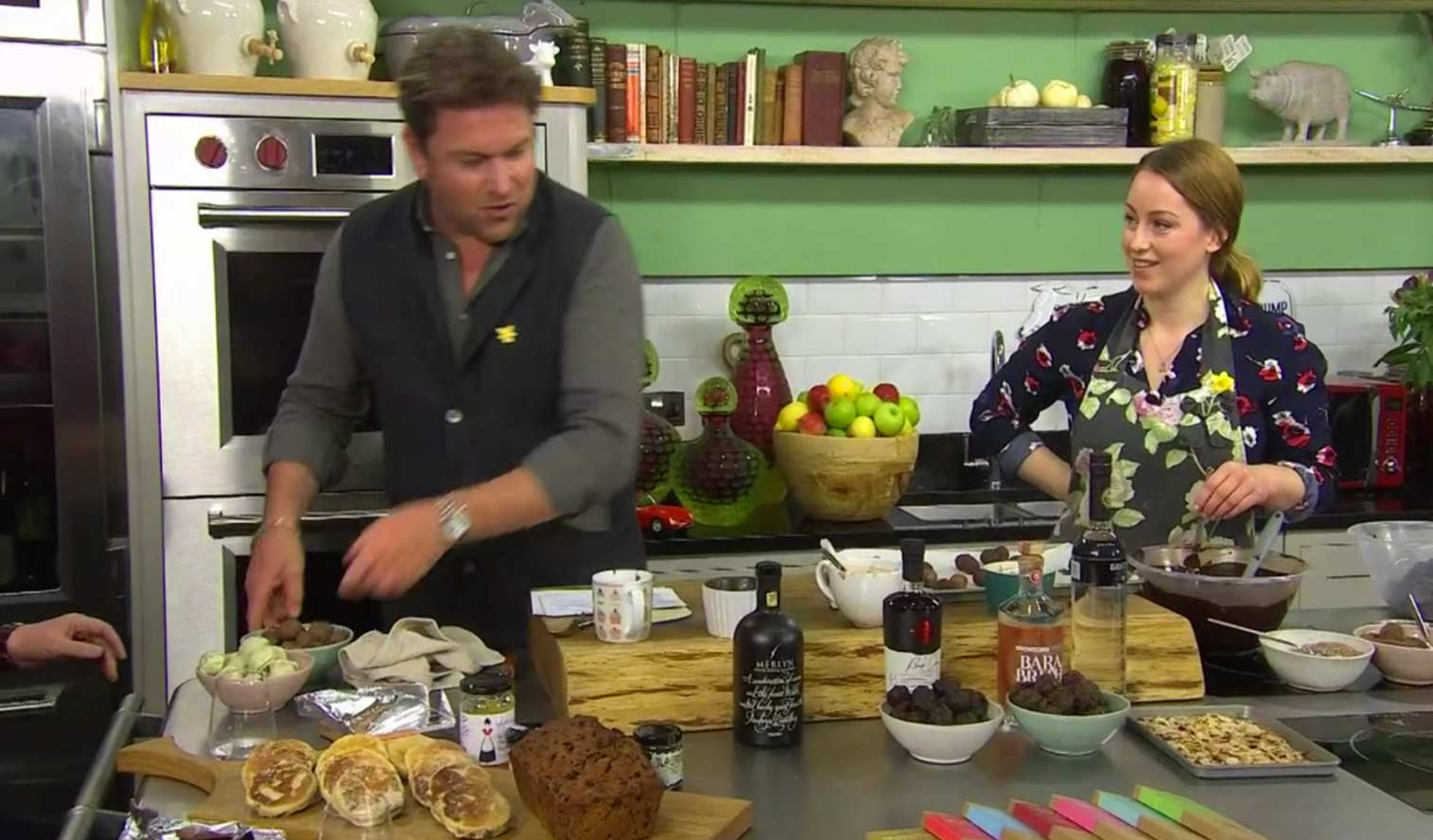From Alfred the Great to Patagonia and beyond: Bara Brith, the great Welsh tradition
Pride for one’s nation is often demonstrated through food. During the 1800s, the Industrial Revolution disrupted the agricultural way of life in Wales, with many rural towns and communities breaking apart to make way for urbanisation. This came with a greater sense of displacement for our Welsh ancestors, the culture of whom was steeped in the agriculture and roots of the land. As the landscape changed, a group decided to find other pastures and set sail for a new home. In 1865, these Welsh settlers had their new land decreed in Patagonia, Argentina and a new Welsh community was born. There’s no doubt that the journey away from Wales was an uncertain time and many settlers took mementos and traditions from their homeland. This, of course, included recipes for bara brith.

Today, the settlers’ descendants continue to enjoy the delights of bara brith – there known as torta negra – and keep the tradition alive in their Welsh tearooms. These flavours are the embodiment of Wales, and through bara brith and other delicacies, distant nations can unite by proudly waving the Welsh flag.
Preceding this, the history of bara brith is difficult to trace. Much like other fruit-studded loaves across the British Isles, there is that consistent question – is it a bread or a cake? To answer that, we need to go back to the Saxons.
In 878, Alfred the Great, king of Wessex, was fighting a war against the Vikings in Somerset. After a difficult defeat, he sheltered a local villager’s house. In our vernacular today, we would say the villager was baking – however, in those days she had probably mixed together a fermented dough, much like a sourdough, potentially using butter and eggs, and settled some buns in the embers of her cooling fire. As the story goes, she asked Alfred to ensure the buns didn’t burn, however, with his mind on war, he did, rather rudely. Different anecdotes call them cakes while others say it was bread, teaching us how interchangeable to the two were and how integral they were to British cuisine, then and now.
During this time, the country we now know as Wales was an amalgamation of various kingdoms, and its peoples were allegedly descendants of the original Britons, however, invading Picts and Saxons eventually stole their territory. It is likely that through invasion, ideas and cultures swiftly travelled the country, including recipes and culinary traditions. Baking scraps of leftover bread with honey to sweeten it was a common trick of Saxon baking. We can’t determine when dried fruits were first incorporated as a sweetener and enricher – some tales allege that dried fruit was a product of local monasteries’ vineyards and became a prominent addition to British baking throughout the Saxon era, while others say we didn’t sample dried fruits, or ‘plumbs’, until the Medieval period when international trade boosted British cuisine. We therefore have a bracket of roughly two hundred years in which bara brith may have first appeared, its name meaning ‘speckled bread’, as it was studded with fruit.
While bara brith is steeped in Welsh tradition, we must remember that during the Medieval era the common folk would not have baked to the same extend as the rich, instead filling their stomachs with wild grains such as oats and barley. The poor in Wales would have shared communal ovens usually built from sandstone and rubble and sealed with clay, which ensured housewives had the facilities to feed their families. It was a luxury to enjoy the tastes of sweetened breads, and as we enter the 14th and 15th centuries, the word ‘cake’ was uttered more frequently to be distinguished from daily fare. Therefore it is due to the richer society’s development of an inherited and most likely oral recipe that we continue to bake bara brith today.

As regions around the British Isles grew more distinct, eventually developing national identities, the enriched ‘speckled breads’ were part of individual claims of nationhood. The Irish continued to bake bairín breac, often made with the foam of fermented ale, until the bread became widely available in the 19th century thanks to more commonly-found baking ingredients. The Scots specialised in a richer Dundee cake, and the English had Lardy cake made with its namesake, lard. Baked with the ingredients available – leftover bread dough, eggs, fat – regional loaves were homemade specialities until the 19th and 20th centuries. At this time, commercial bakehouses appeared in Welsh towns and cities. And this was when bara brith officially took its form as a cake.
Nowadays, the bara briths on the supermarket shelves are made with flour as opposed to yeast, therefore definitively a cake as opposed to a bread. This gives the bake a longer shelf-life, plus the flour can support the extra moisture from the tea-soaked fruits. This brings me to the other crucial ingredient – tea.
The tea trade came to Britain in the 1650s and was consumed as a rare curiosity along with all the flavours and spices, such as chocolate, coffee and vanilla, of other lands. Due to its rarity, tea was a luxury for the rich, and by the 1800s it was eventually accessible to the rest of the country. Tea, along with sugar, another new import to Britain, and spices which arrived during the Crusades in the Medieval age, became main components in the British tea loaf. Spices, such as cinnamon, nutmeg and cloves, were widely lauded across Europe and were soon added to foods with abandon, and in this case, British baked goods. Imported fresh spices would need to be ground by hand in a pestle and mortar, bringing flavours of a new world to traditional foods. The modern ‘mixed spice’ which is favoured by bara brith bakers of today, is a fragrant combination of cinnamon, clove, coriander, ginger and caraway, which, combined with the tea, give a heady richness to what was originally a sweetened bread.

Meanwhile, the other crucial ingredient is unrefined sugar containing traces of molasses. This is usually in the form of brown sugar or muscovado, or sometimes even treacle, the cheap by product of sugar. By the 1600s, British sugar refineries opened which meant treacle was available and affordable to the greater population and was widely used in baking. Its flavour further bestows a depth of caramel to bara brith. Prior to this, we can assume that candied peel was introduced. While ancient Romans would have candied or pickled their citrons to make them palatable, all Roman traditions abruptly ended with the invasion of the Saxons. Therefore candied citrus fruits were probably a result of citrus arriving in Europe during the 14th century and would have been exotic nibbles for the rich and high-society. Nuts, seeds, fruits, herbs, anything was candied due to the fascination with sugar, and would have been added to baked goods for extra sweetness. ‘Modern’ bara brith, the cake brought to prominence in the 1800s, was created by combining intriguing luxuries of dried fruit, sugar, spices and tea in a time-honoured bake.
There is still debate on what is a ‘traditional’ bara brith – its origins are essentially folklore. Opinions vary from town to village, but no matter whether it is made with or without yeast, lard, or our common white flour of today, bara brith is a taste of Wales, an embodiment of nationhood, and its flavours have been imitated in chocolate, marmalade, ice cream and, of course, in gin.
We at Snowdonia Spirit Co took on that challenge. Our gins are a tribute to Wales – fruity wild berry in Love Spoon which is a call to St Dwynwen’s Day, and our Welsh gin is a fond recognition of Afanc, the legendary water monster which could burst rivers and sent the land into flood if angered. We hope our Welsh gin keeps him happy… So what else could we add to the collection but bara brith gin?
The gin market is booming with innovative flavours these days – clotted cream, pink peppercorn, lemon drizzle, to name a few. So the flavours of caramel, spice and fruit are not unusual. In recognising the similarities of bara brith’s spicing to gin’s botanicals, we saw there was a clear connection between the two. Those fragrant spices in bara brith – coriander, ginger, nutmeg and cinnamon – can be easily translated into a herbaceous beverage such as gin which is peppered with its own spices of juniper, coriander and cassia bark, and florals such as angelica. Furthermore, the refreshing tang of citrus prevalent in a gin is a zesty undertone in our beloved fruit bread. A marriage of gin and bara brith combines the sweetness of warm caramel and vanilla-scented fruit, with the bitterness of orange, lemon and clove. With all their shared ingredients, they seem like a logical pairing.
Bara brith conjures images of thickly cut slices of fruity loaf, spread liberally with butter and served with a cup of tea, comforting and homely. Our bara brith gin is just the same, the perfect evening tipple in the twilight – warming and rich, delicious with a twist of orange and grated fresh nutmeg. It can also be combined in other recipes, its heady spice complementing chocolate as demonstrated by chocolatier Ali Pope owner of the The Little Welsh Chocolate Co on last year’s Saturday Kitchen, combining our gin with fruit in her milk chocolate bar. Totally delicious!

Bara brith is a symbol of Wales, a recipe handed down and adapted throughout our ancestry, yet it is also an amalgamation of multiple cultures. Trade from across the world brought the ingredients we treasure today, expanding our Welsh diet of barley, oats and vegetables to include sugar and molasses, spices, citrus and fruits. Our pride in this loaf led us to share it with the distant shores of Patagonia and our international communion of food – the similar ‘speckled breads’ of the British Isles, the flavours of India, China and the Middle East – have continued its tradition to this day. Take a sip of our bara brith gin, wherever you are in the world, and sample a taste of modern Wales.
Tags
